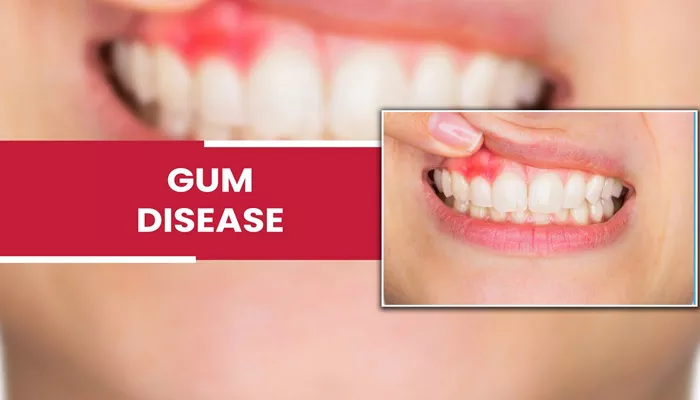Periodontal gum disease, also known as periodontitis, is a severe gum infection that damages the soft tissue and, without treatment, can destroy the bone that supports your teeth. This condition can lead to tooth loss and increase the risk of heart attack, stroke, and other serious health problems. Treating periodontal gum disease requires a combination of professional dental care and consistent at-home oral hygiene practices. This article explores the steps and treatments involved in fixing periodontal gum disease.
Understanding Periodontal Gum Disease
Periodontal gum disease begins as gingivitis, a milder form of gum disease characterized by red, swollen gums that may bleed easily. If not treated, gingivitis can progress to periodontitis, where the inner layer of the gum and bone pull away from the teeth, forming pockets that can become infected. The body’s immune system fights the bacteria as the plaque spreads and grows below the gum line. The toxins produced by the bacteria in plaque, as well as the body’s response to these toxins, start to break down the bone and connective tissue that hold teeth in place. If not treated, the bones, gums, and tissue that support the teeth are destroyed. The teeth may eventually become loose and have to be removed.
How to Fix Periodontal Gum Disease
1. Professional Dental Cleaning
Initial Therapy: The first step in treating periodontal gum disease is a thorough cleaning by a dental professional. This process involves scaling and root planing, which is a deep-cleaning method to remove plaque and tartar from above and below the gum line.
Scaling and Root Planing: Scaling involves removing plaque and tartar from the tooth surfaces and beneath the gums. Root planing smooths the root surfaces, making it more difficult for plaque and tartar to reattach and helps remove bacterial toxins.
SEE ALSO: What Are The Medications for Treating Periodontitis?
2. Medications
Antibiotics: Your dentist may prescribe antibiotics to help control bacterial infection. These can be taken orally or placed directly into the periodontal pockets. Common antibiotics include doxycycline, minocycline, and chlorhexidine.
Antimicrobial Mouth Rinse: A medicated mouthwash containing chlorhexidine can help reduce bacteria and treat gum inflammation.
3. Surgical Treatments
Flap Surgery (Pocket Reduction Surgery): If deep pockets and inflammation persist after scaling and root planing, flap surgery may be necessary. During this procedure, the gums are lifted back, and the tartar is removed. The gums are then sutured back into place to fit snugly around the tooth.
Bone Grafts: This procedure uses fragments of your own bone, synthetic bone, or donated bone to replace bone destroyed by periodontitis. These grafts serve as a platform for the regrowth of bone, which restores the stability of teeth.
Soft Tissue Grafts: Tissue is taken from the roof of your mouth or a donor source to cover any exposed roots or to reinforce thin gums.
Guided Tissue Regeneration: Performed in conjunction with flap surgery, a small piece of mesh-like fabric is inserted between the bone and gum tissue to keep the tissue from growing into the area where the bone should be, allowing the bone and connective tissue to regrow.
Bone Surgery: This procedure smooths shallow craters in the bone due to moderate and advanced bone loss. After flap surgery, the bone around the tooth is reshaped to decrease craters, making it harder for bacteria to collect and grow.
4. Laser Therapy
Laser treatment is a less invasive option for treating periodontal disease. A dental laser can remove inflamed gum tissue and kill bacteria in the periodontal pockets, promoting healing and reducing pocket depth. The benefits of laser therapy include less bleeding, swelling, and discomfort.
5. Ongoing Maintenance
Regular Dental Visits: After initial treatment, regular dental check-ups are crucial to monitor the health of your gums and maintain oral hygiene. These visits typically include professional cleaning and monitoring for any signs of disease recurrence.
Oral Hygiene Practices: Consistent and thorough at-home oral care is essential. This includes brushing at least twice a day with fluoride toothpaste, flossing daily to remove plaque between teeth, and using an antimicrobial mouthwash to reduce bacteria in the mouth.
6. Lifestyle Changes
Quit Smoking: Smoking is a significant risk factor for periodontal disease. Quitting smoking can improve treatment outcomes and overall oral health.
Healthy Diet: A balanced diet rich in vitamins and minerals, especially vitamin C and calcium, supports gum health and can help the healing process.
7. Natural Remedies and Adjunctive Therapies
Oil Pulling: Swishing coconut or sesame oil in your mouth for 10-20 minutes daily can help reduce bacteria and improve gum health.
Herbal Remedies: Certain herbs, like tea tree oil, neem, and sage, have antibacterial properties and can be used in mouth rinses or toothpastes.
Probiotics: Probiotics can help maintain a healthy balance of bacteria in the mouth and support overall gum health.
Prevention of Periodontal Gum Disease
Preventing periodontal disease involves maintaining good oral hygiene practices and regular dental check-ups. Here are some tips:
Brush your teeth at least twice a day with fluoride toothpaste.
Floss daily to remove plaque from between your teeth and under your gum line.
Visit your dentist regularly for check-ups and cleanings.
Eat a balanced diet to provide the necessary nutrients for healthy gums.
Conclusion
Fixing periodontal gum disease involves a multi-faceted approach that includes professional dental treatments, medications, possible surgical interventions, and diligent at-home oral care. Early diagnosis and treatment are crucial to prevent the progression of the disease and to preserve the health of your gums and teeth. Regular dental visits and a commitment to oral hygiene can help manage and prevent periodontal disease, ensuring a healthy smile for years to come.

